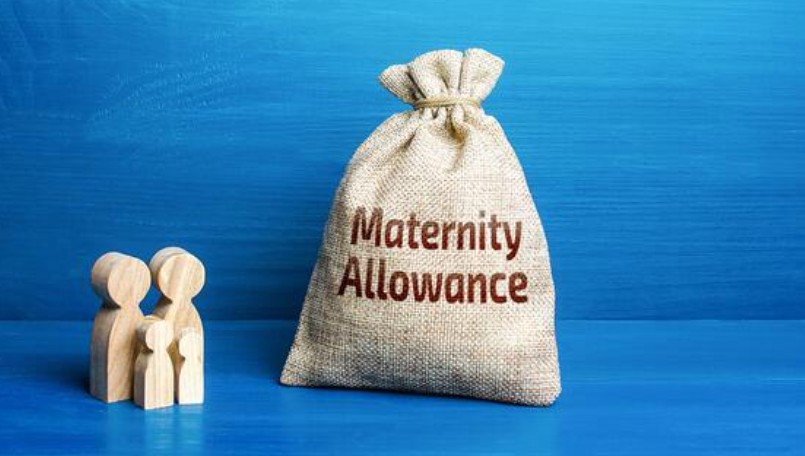Starting a family is a life-changing moment. Alongside the excitement of welcoming a new baby, many expectant parents face real financial concerns. One of the most common and immediate questions asked across the UK is: how much is Statutory Maternity Pay?
Understanding how Statutory Maternity Pay (SMP) works is essential for planning your finances, managing maternity leave, and ensuring you can comfortably take time away from work to care for your child. In this article, we’ll break down everything you need to know about Statutory Maternity Pay—from how much you’ll get to who qualifies, how to apply, and what options you have if you’re not eligible.
What is Statutory Maternity Pay?
Statutory Maternity Pay (SMP) is the minimum maternity pay that employers in the UK are legally required to provide to eligible employees when they take maternity leave. It is a government-regulated benefit designed to help mothers manage financially while they are away from work to have and care for their baby.
SMP is paid by your employer, usually in the same way as your regular wages, and tax and National Insurance contributions are still deducted as normal. The payment is intended to give working mothers financial support, but is often only a part of the income they may need to live on during maternity leave.
While many large companies offer enhanced maternity packages, SMP is the basic minimum that must be paid by law if the employee meets the qualifying criteria. It’s crucial to know exactly what SMP provides so you can plan for any income gaps during your time off.
How Much is Statutory Maternity Pay?

One of the most important questions expectant mothers ask is how much is Statutory Maternity Pay. Understanding the payment structure will help you calculate your maternity income and make appropriate financial plans.
The Current SMP Rates (2025):
- First 6 Weeks:
During the initial six weeks of maternity leave, you will receive 90% of your average weekly earnings before tax. - Next 33 Weeks:
For the following 33 weeks, you will be paid either £184.03 per week or 90% of your average weekly earnings, whichever amount is lower. - Total Payment Period:
Statutory Maternity Pay is available for up to 39 weeks.
It’s important to note that these rates are reviewed annually, usually in April, and can be updated by the UK government. Always verify the latest figures on the official government website.
Example Calculation:
If you earn £500 per week:
- For the first 6 weeks, you will receive 90% of £500 = £450 per week.
- For the next 33 weeks, you will receive £184.03 per week (as this is lower than 90% of your weekly pay).
By understanding this payment structure, you can forecast your income throughout your maternity leave and plan accordingly.
Who Qualifies for Statutory Maternity Pay?
Not everyone automatically qualifies for Statutory Maternity Pay. The UK government has clear eligibility criteria, which help determine whether you can receive this benefit from your employer.
To qualify for SMP, you must:
- Be an employee who has worked for the same employer continuously for at least 26 weeks by the end of the 15th week before the baby is due.
- Earn an average of at least £123 per week (before tax) during the relevant earnings period.
- Provide your employer with at least 28 days’ notice (or as much notice as reasonably possible) of when you want your maternity pay to start.
- Provide proof of pregnancy, usually in the form of a MATB1 certificate from your doctor or midwife.
If you do not meet these requirements, you may not be eligible for SMP, but you may still be able to claim Maternity Allowance, which is a separate benefit paid directly by the government.
It’s always recommended to check your eligibility as early as possible in your pregnancy, preferably by discussing it with your employer’s HR or payroll department.
How to Apply for Statutory Maternity Pay?

The process of claiming Statutory Maternity Pay is usually straightforward, but it is your responsibility to provide the correct notice and documentation to your employer in time.
Steps to Apply:
- Inform Your Employer:
- You must notify your employer that you are pregnant and provide the expected due date.
- This notification should be given by the end of the 15th week before your baby is due.
- Submit Your MATB1 Certificate:
- You must give your employer your MATB1 certificate, which confirms your pregnancy and due date. This is usually issued around the 20th week of pregnancy.
- Agree on Leave Start Date:
- You can choose when your maternity leave will start, usually anytime from 11 weeks before your due date.
Your employer will then confirm in writing how much SMP you’ll receive and when your payments will start and end.
If your employer decides you’re not eligible, they must give you form SMP1, which explains the decision. You can use this form to apply for Maternity Allowance instead.
What if You’re Not Eligible for Statutory Maternity Pay?
If you do not qualify for Statutory Maternity Pay, there are alternative support options available in the UK.
Maternity Allowance:

If you’ve recently changed jobs, are self-employed, or don’t meet the earnings or employment criteria for SMP, you may be able to claim Maternity Allowance. This is usually paid by Jobcentre Plus and can provide up to £184.03 per week for 39 weeks, depending on your work history and earnings.
Other benefits you may be entitled to include:
- Universal Credit: Financial support based on your household income.
- Child Benefit: Available to most parents and can help with the cost of raising children.
It’s essential to explore these alternatives as early as possible so that you do not miss out on financial support during your maternity leave.
The Importance of Understanding Statutory Maternity Pay
Knowing how much Statutory Maternity Pay is and understanding the eligibility rules is vital for all expectant mothers in the UK. Planning for maternity leave requires more than just packing a hospital bag—it means being prepared financially for a significant change in household income.
Many mothers underestimate how quickly their income can drop once the 90% pay period ends. Statutory Maternity Pay often doesn’t fully cover household expenses, especially as inflation and the cost of living continue to rise across the UK. That’s why it’s important to:
- Budget carefully before and during maternity leave.
- Investigate whether your employer offers enhanced maternity packages that can provide additional income.
- Look into government benefits and financial support that could supplement your income.
- Consider savings or other sources of financial support to help cover the lower-pay period.
Employers are required by law to provide you with all the necessary information about SMP. However, taking personal responsibility to fully understand the system can make a significant difference in how you navigate your maternity journey.
Final Thoughts
Statutory Maternity Pay is a crucial financial benefit for working mothers in the UK, but it’s not always sufficient on its own. Knowing how much is Statutory Maternity Pay, how it is calculated, and whether you qualify will help you make well-informed decisions about your maternity leave and financial planning.
Maternity leave should be a time focused on bonding with your new baby, not worrying about money. By taking time to understand your rights, checking your eligibility, and planning early, you can approach this exciting stage of life with greater confidence and security.






